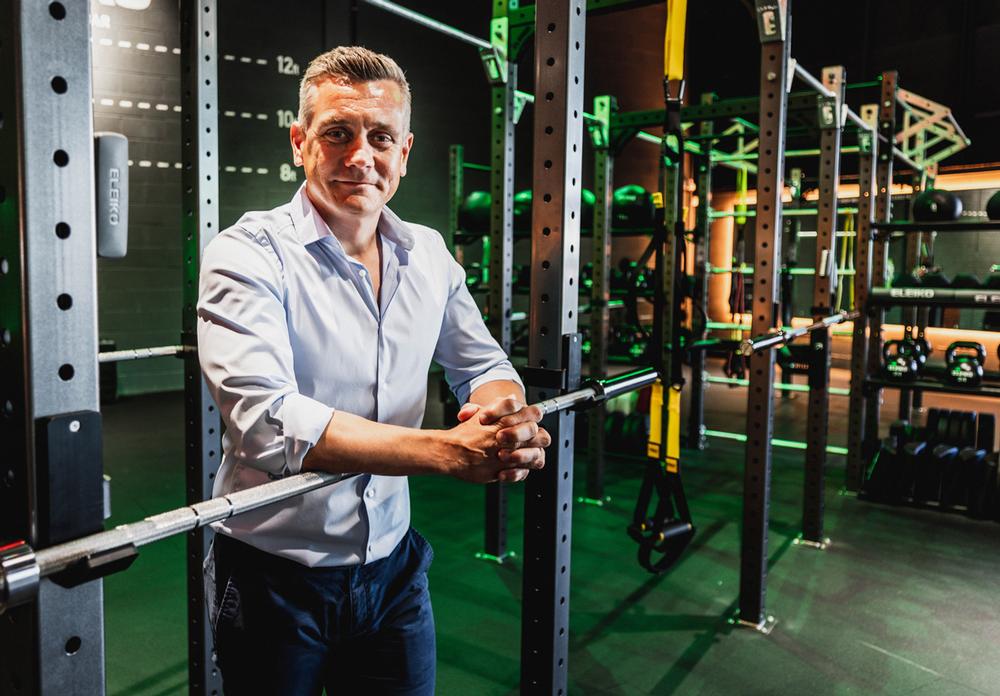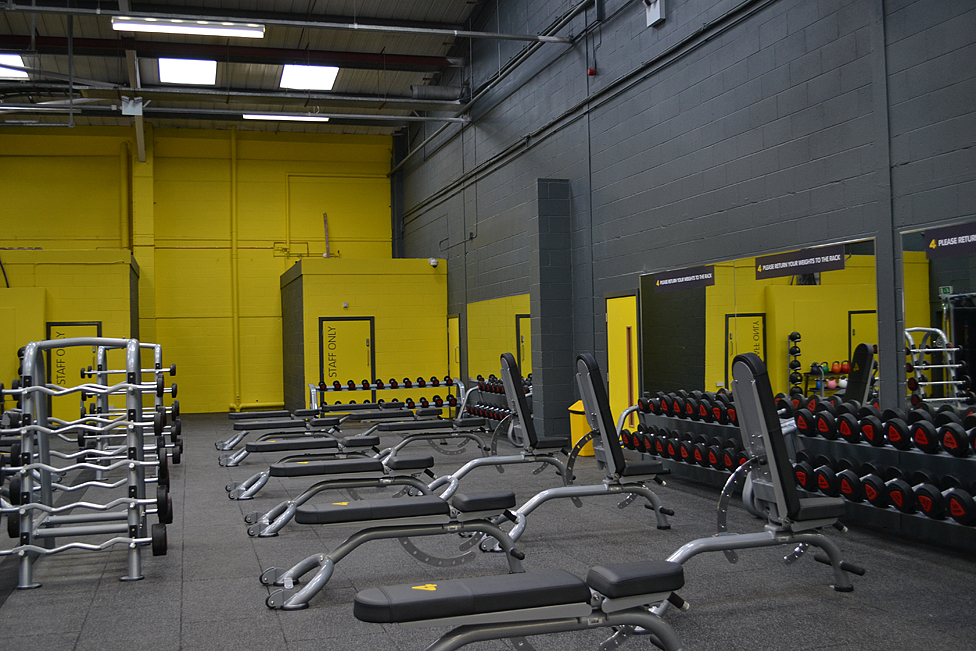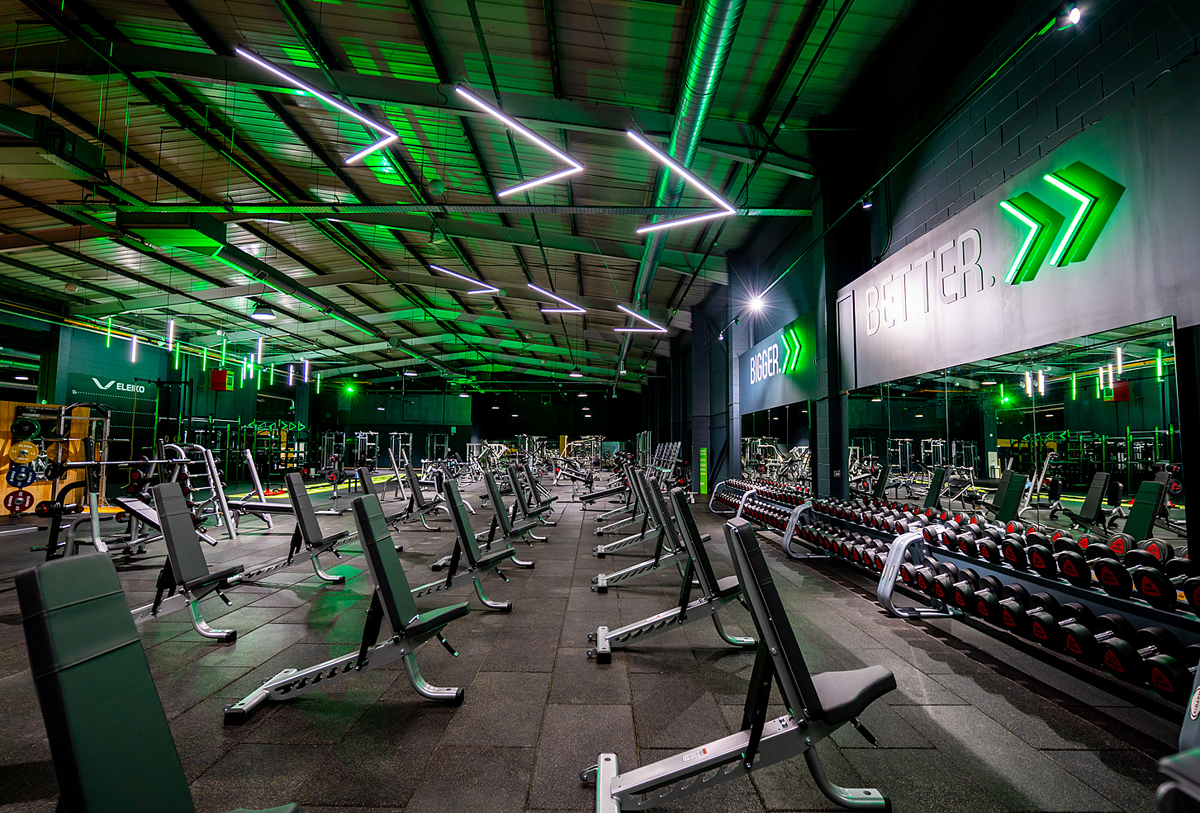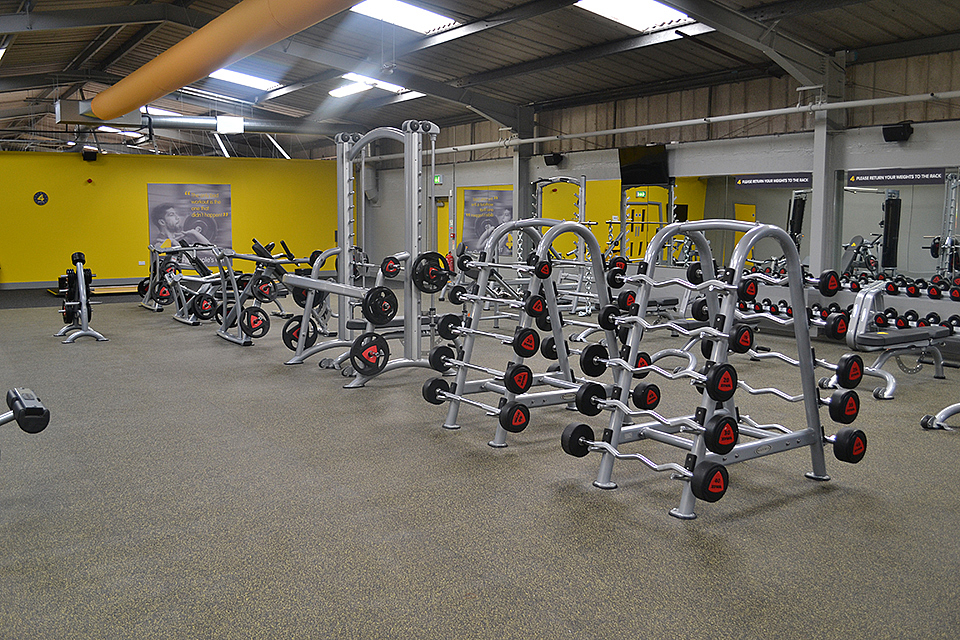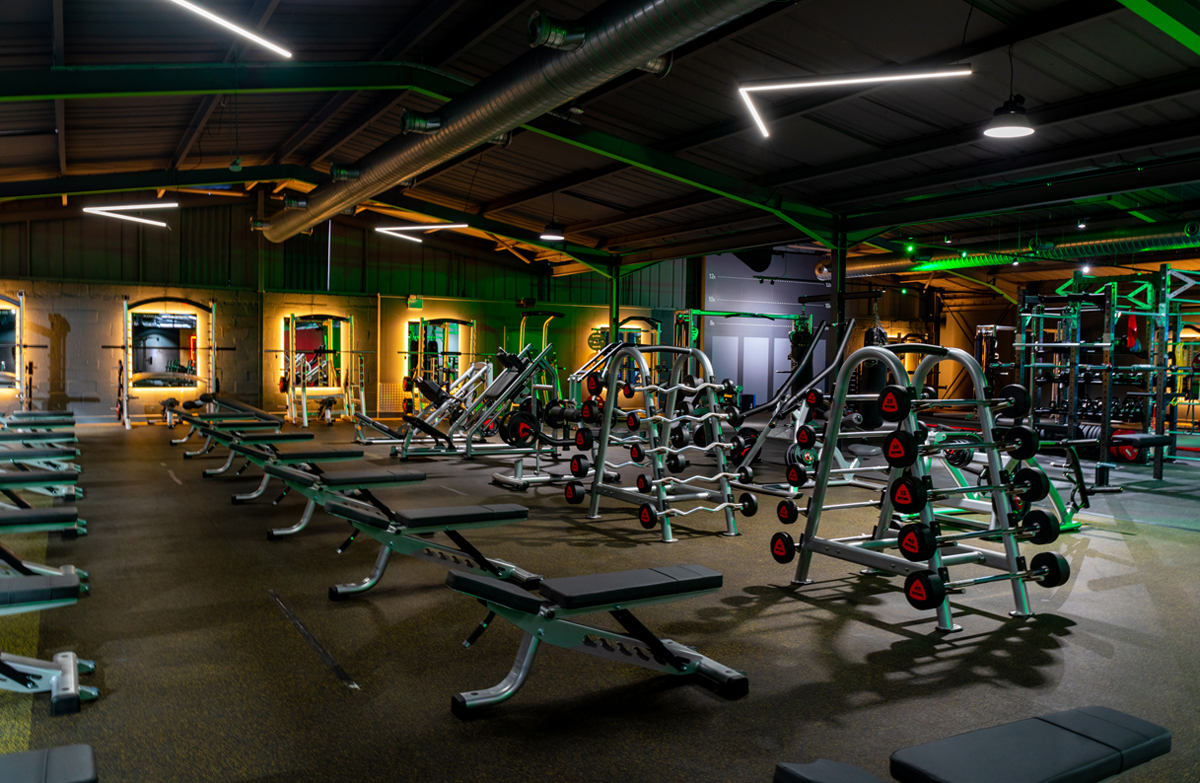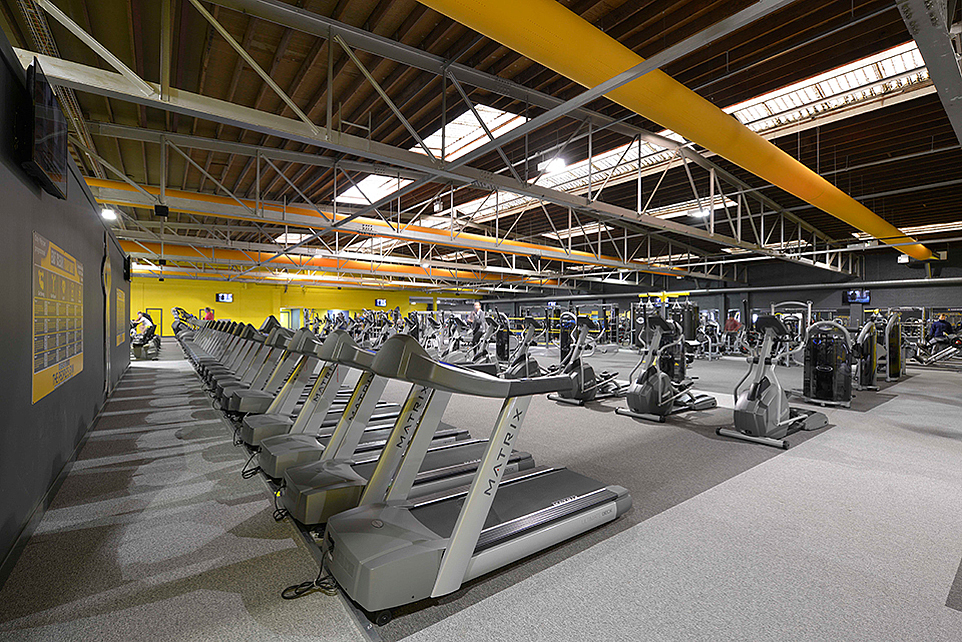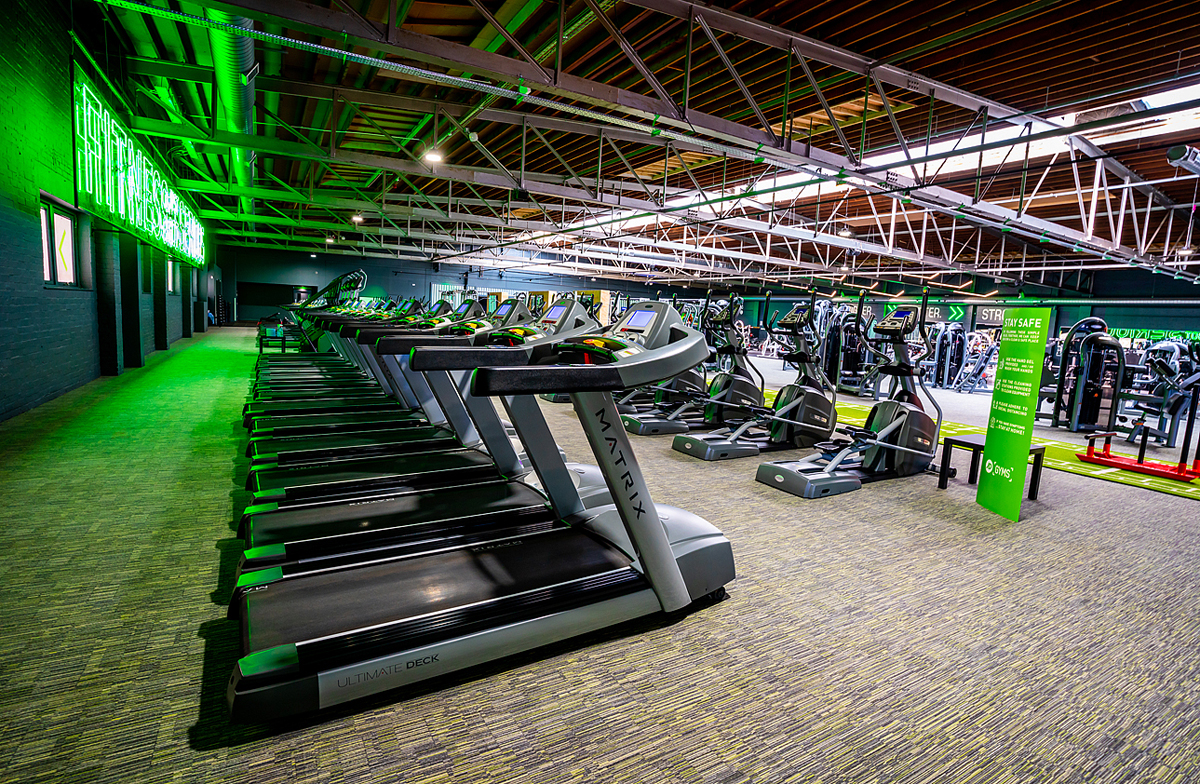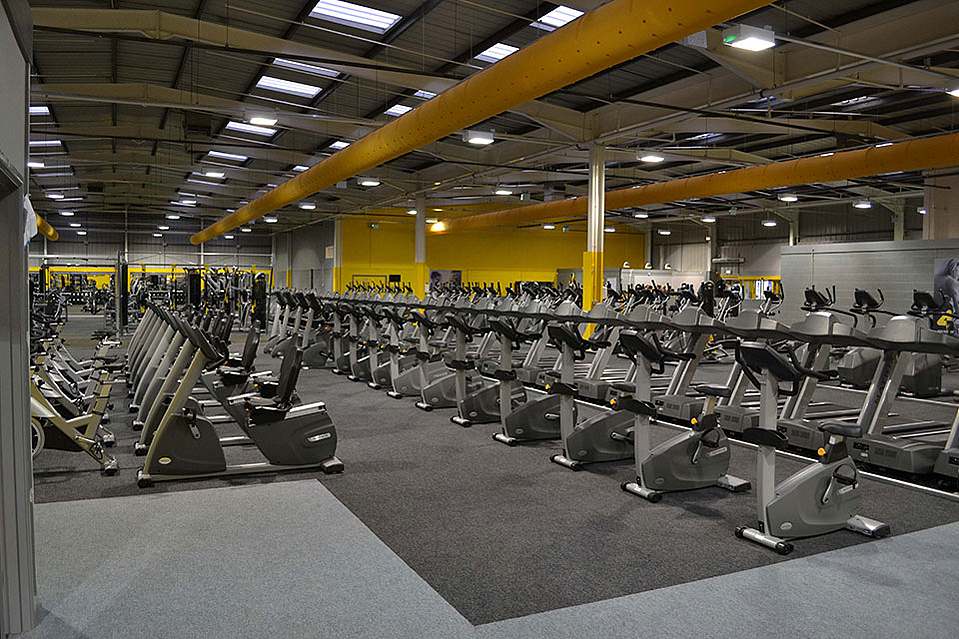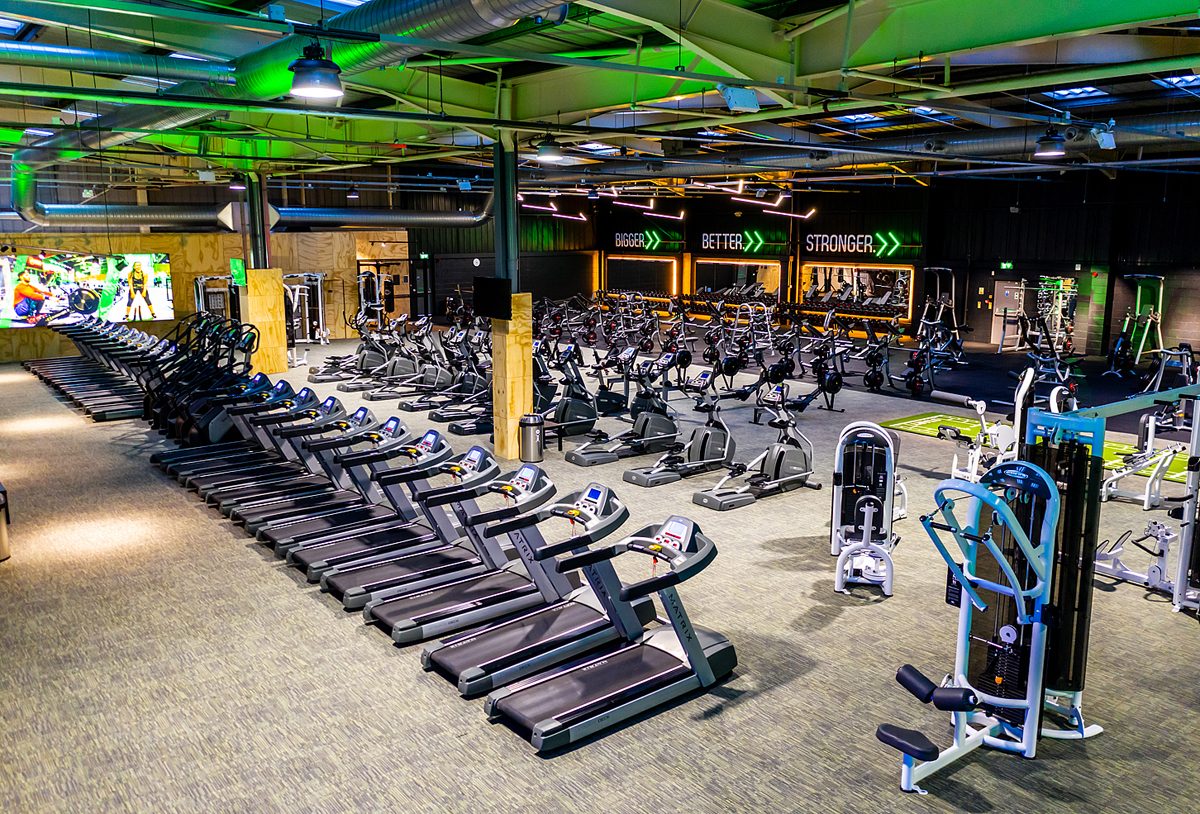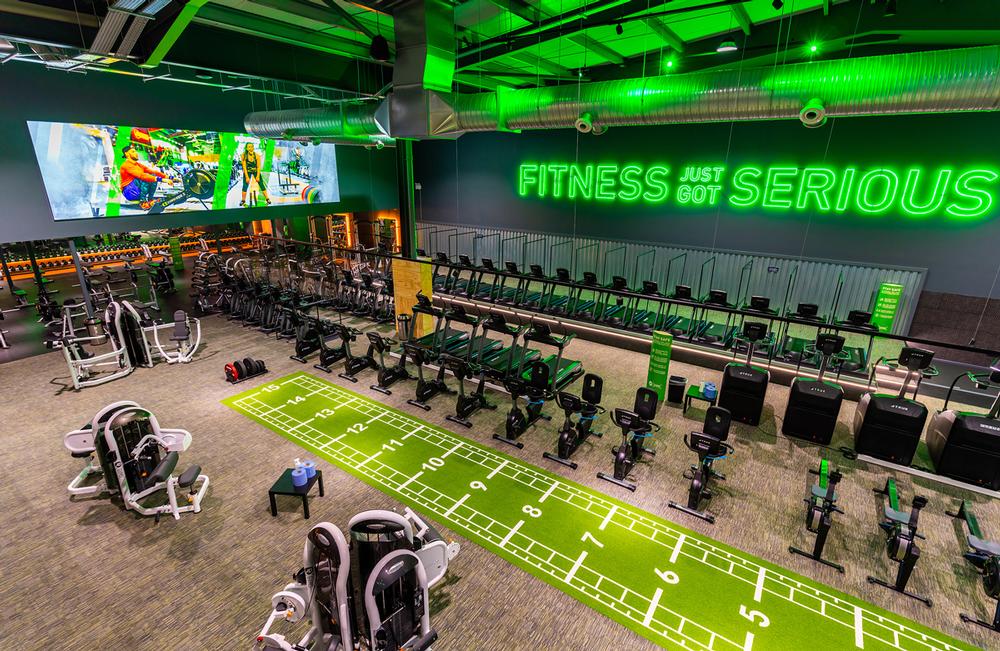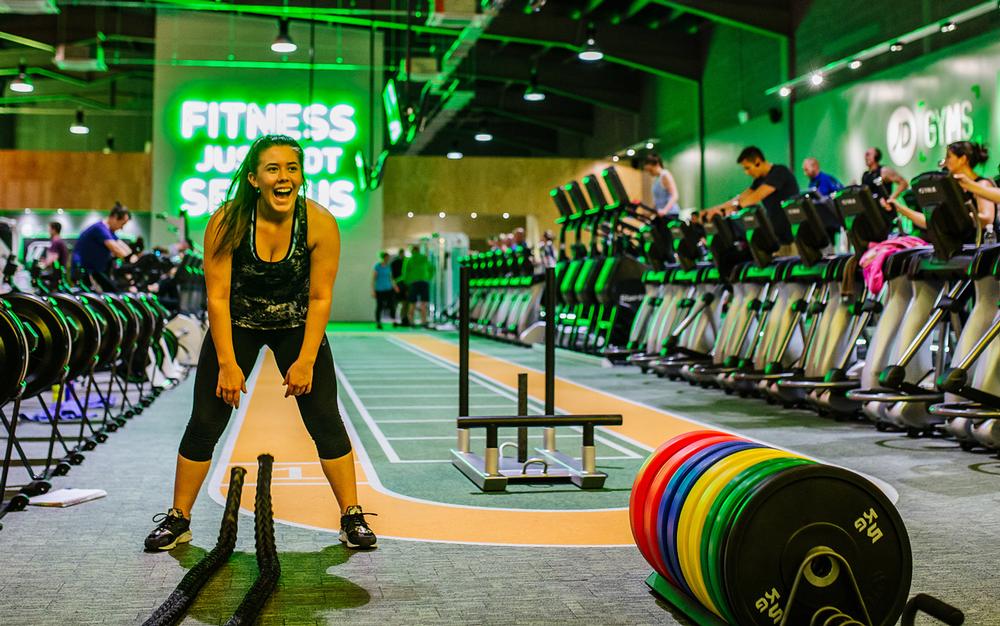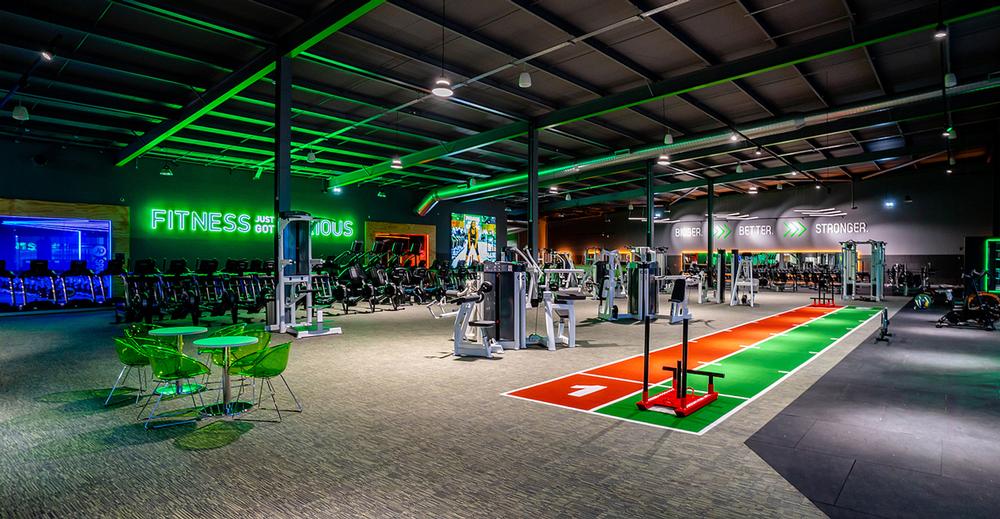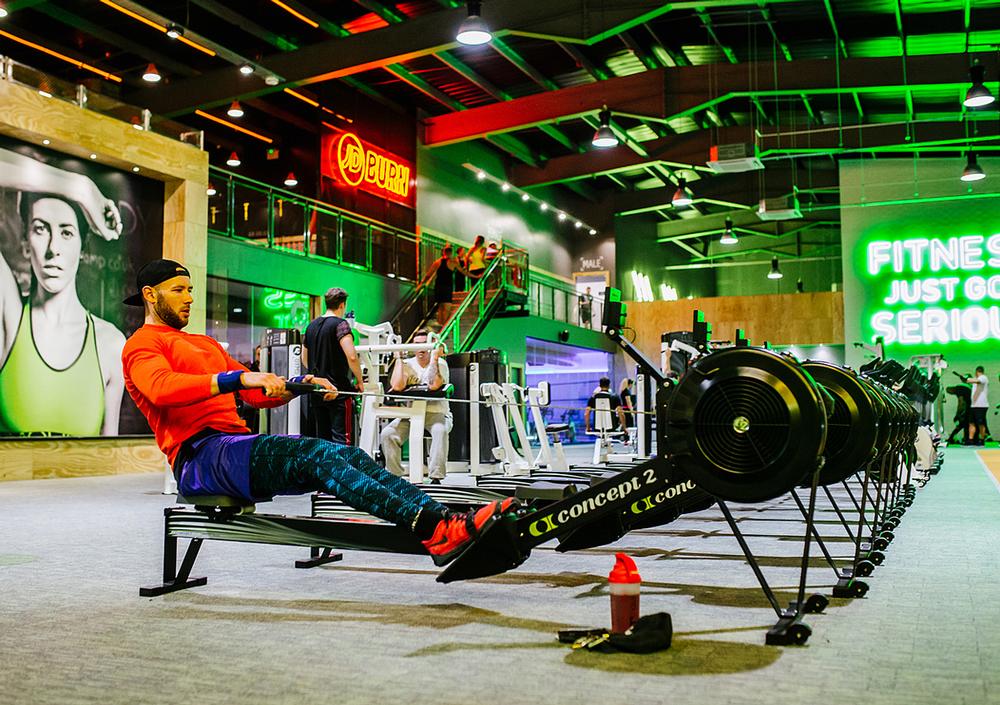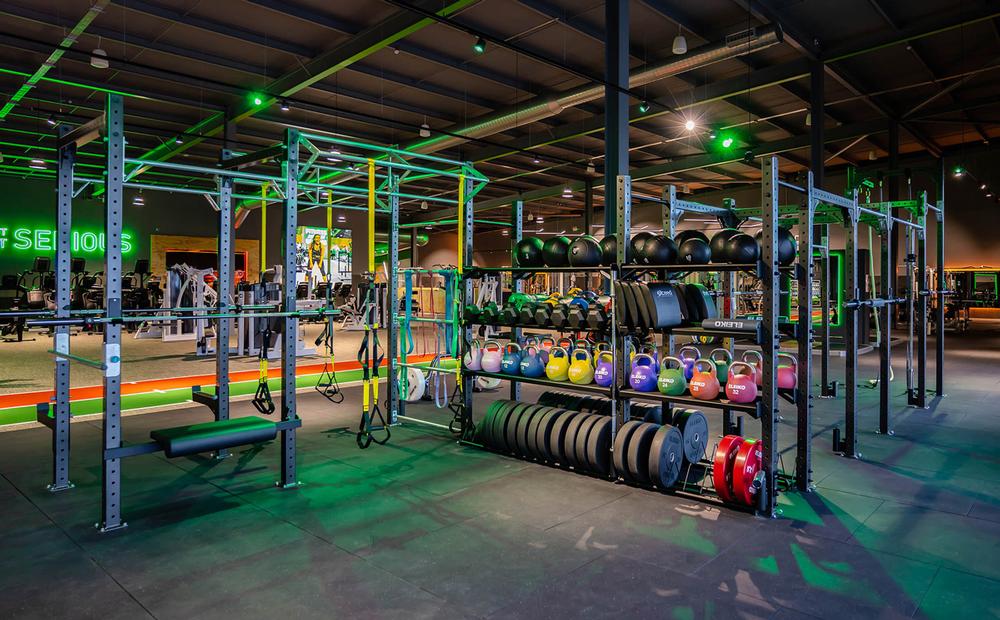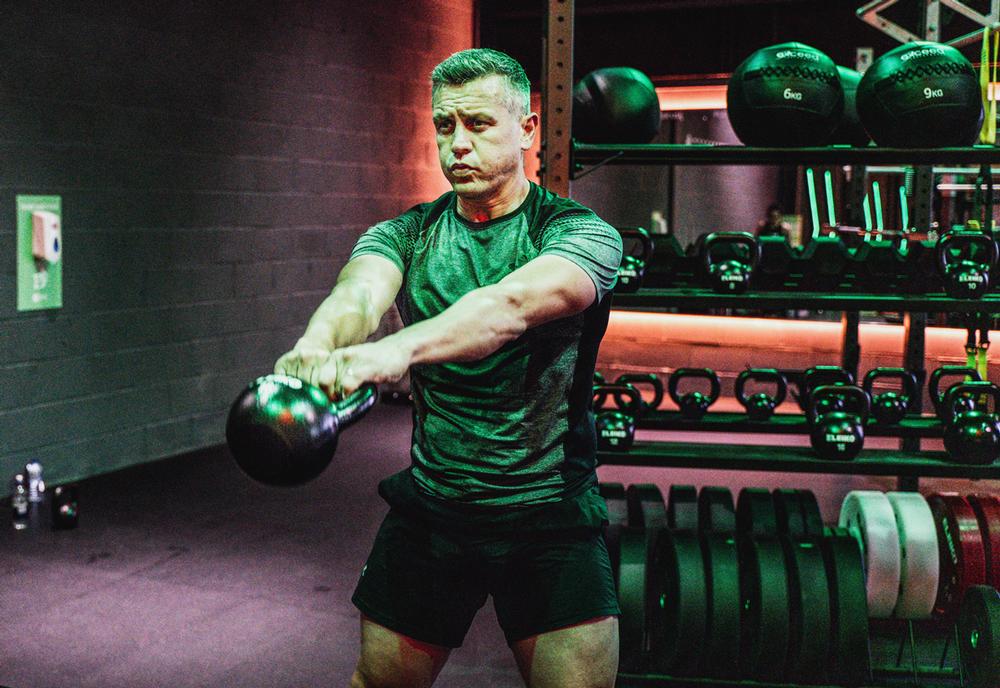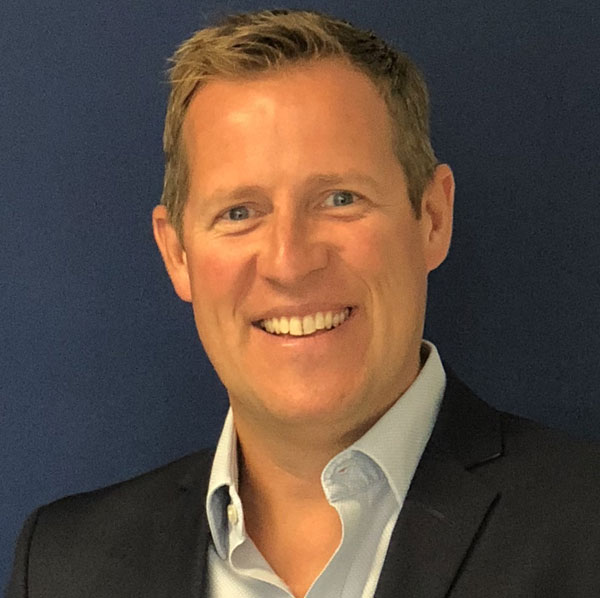The last time HCM talked with Alun Peacock – for an article published in HCM August 2017 – he was confident the JD Gyms concept, originally launched in February 2014, had been proven.
Club number 11 was about to open its doors and the brand – part of JD Sports’ global retail business – was aiming to have a 16-strong portfolio by the end of that year.
Fast-forward to mid-2021 and, in spite of COVID-19, JD Gyms’ growth has accelerated to 74 gyms. That growth has been achieved both organically and via the acquisition of sites from Ben Dunne, Helio Fitness, DW Fitness and – most notably – the Xercise4Less chain, bought out of administration last year for £24.2m, with the deal completing just a few days before the first lockdown ended.
He brings us up to speed on the JD Gyms story.
What’s the JD Gyms model?
Very simply, we offer our members a premium fitness experience at a low-cost price point.
The vast majority of JD Gyms sites sell at a £19.99, no-contract price point, but offer a higher-end experience with cutting-edge interior design, inspirational layouts, what we consider to be the best range of equipment on the market, over 300 classes a month and saunas in the changing rooms.
There’s a real X factor when it comes to the atmosphere in our gyms. It’s difficult to put your finger on, as it’s the sum of all parts – everything from lighting to air quality to music, the people around you and the type of workouts they’re doing, to the team buy-in at every gym, that injects the personality and creates a true club feeling.
We have an innovative group exercise offering too. Take JD Burn, for example, our signature HIIT programme. These classes are housed in a bespoke third studio or, in those gyms where space doesn’t allow, we design our main studios to be hybrid; at the flick of a switch, we can alter the whole atmosphere via lighting to ensure JD Burn feels different from our other classes.
We’re regularly told our product is worth more than we charge, but obviously we’ve done our homework on this. We understand this price point suits us from a demand elasticity perspective. It’s not about what it’s worth. It’s about where we think the price point needs to be to get the best returns.
We certainly don’t operate with a ‘yeah, but it’s only 20 quid a month’ mentality. It’s just not in our psyche. We want to be as good as, if not better than, other offerings on the market, irrespective of the price the members are paying.
What’s your member profile?
Like most chains, we attract members of all ages and abilities. We get the ‘newbies’ and the less confident gym-goers, and we help them get immersed in no time. But in the main, we tend to attract a younger, fitter, more frequent attender than you find at a lot of other gyms: a significant number of our members visit every day, and in some cases more than once a day.
We know we aren’t for everyone, though: some people want a smaller, more intimate gym; others want a swimming pool. With our design and fit-out – and of course our strapline, Fitness just got serious, which is emblazoned in huge green neon lights in every gym – we attract a higher proportion of those who are serious about their training. We cater for those who want a large, best-in-class, atmospheric gym with the provision to train exactly how they want to. And we have the space to do it – prior to the Xercise4Less acquisition, our average club footprint was 24,000sq ft. Now it’s around 29,000sq ft.
What was the state of play at JD Gyms pre-COVID?
If we rewind to just before we last spoke, 2016 had been a transformative year for us. We’d opened six sites that year, all of which were successful from the off, reinforcing our early beliefs that we were creating a winning formula with which to expand the brand.
We’d also started to get a real foothold and presence in the market, with people starting to understand what we were about. The JD brand is so incredibly well-known and recognised as a major retailer, but we were making real headway into ‘Hey, JD does great gyms too…’
By March 2020, we were trading from 30 sites, with a ‘quality over quantity’ approach to our growth that meant all our sites were successful. Our organic pipeline was firing well – we’d turned the burners up on it – and were constantly on the lookout for potential acquisitions. There was real momentum in the business.
Then along came COVID-19...
COVID took us all by surprise. I don’t think there’s anyone in the sector who would have predicted what we as a nation, never mind an industry, would face.
I’ll never forget sitting with my team, hearing the PM saying gyms must close. We’d pulled together an action plan, but didn’t expect to be deploying it so soon.
We sent all our members a text message within the hour saying: ‘Don’t cancel your direct debit – we’ll automatically freeze it.’ We were very proactive in our comms throughout and were pleased with how few members cancelled. We retained faith throughout that we would have a buoyant membership base to re-open with – our younger, fitter members who are loyal to our brand and to whom fitness is an absolute priority.
In spite of our members’ appetite for fitness, though, our approach to supporting them during lockdown wasn’t in the shape of online workout content.
Our members are very tech-savvy and there was already a plethora of free content available online. The weather in that first lockdown was also glorious, so people were running and cycling and doing bootcamps in their back gardens using whatever they could get their hands on. They weren’t finding it hard to stay active.
Instead, we asked ourselves the question: ‘How can we really help our members? Where can we add real value?’ At that point, people were nervous about what was going to happen financially, and we felt there was a bigger win to be had focusing on this.
In addition to freezing all direct debits, we quickly implemented a discount platform and gave every member access to it, with discounts at key supermarkets including Sainsbury’s, Tesco and Morrisons; at John Lewis, Selfridges, Argos; and 10 per cent off at all JD Group stores. The platform was available to all members – all you had to do was not cancel your membership – and it was incredibly successful for us from a retention perspective.
Tell us about the X4L acquisition
We’ve explored many potential acquisitions over the years, but have always been very selective in what we’ve actually taken through to completion. Of the 30 sites we were operating by the time lockdown hit, 26 had been built organically. We have to be absolutely confident any acquisitions will dovetail well into the unique product we build.
I’ve long admired aspects of the Xercise4Less model and recognised its success over the years. We’d heard whispers of the business experiencing difficulty, so when this was confirmed and it came on to the market, strategically, we were determined to get it.
Although underinvested by the time it came up for sale, we were attracted to the strong locations and large sites; we were confident they would work for the JD Gyms product. There were lots of other great raw factors too for the majority of sites: big studios, large car parks and excellent property deals, alongside high member numbers and strong awareness. We knew that in remodelling these sites and applying JD Gyms’ magic dust, we’d enhance the member experience and be able to grow the yield accordingly.
The acquisition of Xercise4Less has accelerated our growth plans by three years and has given us a strong presence in Scotland, as well as a footprint in south-east England. It’s bolstered us across Wales, the North West, North East, the Midlands and Yorkshire too.
In bringing the business back out of administration, a number of poorer performing, unprofitable Xercise4Less sites needed to be released. Coincidentally, the majority of these overlapped geographically with our existing estate. Having acquired 50 sites, we immediately closed 11, consolidating those members into their local branch of JD Gyms.
Tell us about the rebrand
I wouldn’t call it a rebrand. It’s a complete transformation. This isn’t just about the name above the door and a lick of paint. It’s everything we talked about earlier: the atmosphere, the quality, the equipment provision. It’s a significant undertaking and we’ve adopted a phased approach; we simply couldn’t do a full refurbishment on all 39 clubs overnight.
We ‘made good’ and rectified underinvestment as quickly as we could, though, with phase one involving repairs to all essential pieces of equipment, some cosmetic repairs and a few new touches – creating modest functional areas, for example. This was done as a blanket investment across all 39 clubs in the space of two months.
They were still Xercise4Less at this point, though, and we kept the price point at £9.99 as – where JD Gyms lost very few members during lockdown – Xercise4Less hadn’t fared quite as well. We needed to build the membership back up and add more value before we could put up the price.
The original plan was then to go through a second stage everywhere, at which point the clubs would be rebranded. However, the second lockdown hit us in November and we seized the opportunity to completely transform the first seven sites where the leases had been secured with the landlords.
It was challenging, because access to labour and materials was incredibly difficult during lockdown, but we re-opened all seven sites as fully trading JD Gyms by mid-December 2020.
Then, of course, along came lockdown number three – particularly challenging given two of our newly rebranded sites closed again within 48 hours of opening. This lockdown didn’t come as a complete surprise, though, and we’d lined everything up to complete a further 12 rebrands during this window. We now have just 20 to go which, with all leases now secured, we’ll do by the end of this year.
How has re-opening gone?
This time around, brilliantly. The market is incredibly buoyant, and we’ve seen sales numbers and attendance better than those of a January/February peak across both brands.
There remains, however, a very distinct difference in baseline performance across the two brands.
The original JD Gyms estate, along with the 19 conversions and the new organic sites – we’ve opened five clubs since March 2020 – are all performing above or in line with every KPI and expectation. There’s no compromise on performance at the converted Xercise4Less sites in any way, shape or form, even though we’ve now upped the yield to the standard JD Gyms’ £19.99 no-contract price point.
What are your growth plans?
Our organic growth has continued since the first lockdown began, albeit at a slower pace; the whole pipeline slowed due to COVID, with the commercial property market just not moving as it usually would.
The Xercise4Less acquisition, plus the five new JD Gyms, brings us to 74 quality locations currently: 35 JD Gyms, 19 Xercise4Less conversions, and [as at 11 June] 20 Xercise4Less-branded clubs.
We have another six organic sites set to open this year and are actively expanding into territories where we don’t currently have a significant footprint. The model travels really well and we’re emerging as a national player.
Meanwhile, where some might let things bed-in after such a big acquisition before looking at anything else, if anything it’s had the opposite effect on us. It’s quickly made us a more significant business in the JD Group and has given us an even greater appetite for growth.
It’s not a case of if but when we make the next acquisition.
Anything else on the radar?
We’re constantly evolving and thinking about what the next iteration of JD Gyms will look and feel like – not because we’re dissatisfied with what we have now, but because I’m a great believer in ‘if you’re standing still, you’re going backwards’.
One example: we’ve formed an exciting partnership with Eleiko over the last 18 months to dual-brand our functional spaces. Together we’re creating huge functional playgrounds – a real talking point and almost a gym within a gym. We’ll continue to develop our gym floors to stay ahead of trends.
And now we’ve established ourselves in the fitness market, we’re already looking at opportunities to diversify. The clubs will remain our primary focus at this stage, but we are planning brand extensions from JD Gyms. I’m not yet ready to tell you what they might be, but we aim to diversify into other areas over the coming years.
What’s the secret of JD Gyms’ success?
In short, passion and perfection. I drive the team to live and breathe what we do and we all collectively strive for perfection.
It’s our mission to continue to innovate and we apply this ethos across everything we touch: brand, product, location choice, marketing, service standards, daily operations.
We have a lean but effective head office team where everyone is accountable for their parts of the business, and everyone understands what each other is accountable for. This interdependence helps us drive exceptional performance: we all thrive on doing our bit and knowing the victory couldn’t have happened without each one of us doing exactly that.
As an ex rugby player, team winning mentality is ingrained in me – there’s nothing like looking around the changing room, into the eyes of your teammates, after winning a match – and these values, that same collective sense of victory, also run through my incredible team, in the boardroom and on the gym floor.
We want to be put under pressure. We understand we’re working in a business that, for us, is best in class. We’re innovating in ways we feel others aren’t and performing at a level beyond expectation. That sort of environment isn’t for everybody, but my key team wouldn’t have it any other way and I’m really proud of everything they achieve.
And that’s the mindset I’m always on the lookout for. If we find the right people, very often we’ll shape the role around them. It’s how all of my senior team came on-board, rather than in response to a specific job ad.
What motivates you?
It’s impossible not to be motivated. Look at what I’m leading and what we’ve created.
I completely immerse myself in our product, too: I train in our gyms most days, with colleagues and alongside our members. I’m not inspecting the gym floor, I’m using it. I live it and breathe it, I touch it and feel it. I get excited to get my kit on and have a quality workout wherever I am across our estate that day.
I’m fortunate, proud and privileged to be in the seat I’m in, working in an industry I love, in an incredible business that we’ve created from scratch – building, operating and training in the most exciting gyms – while surrounded and supported by my key team. What more motivation could anyone need?








